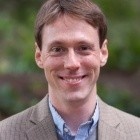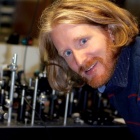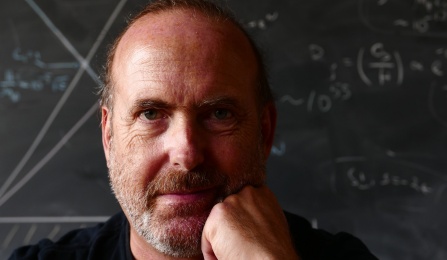
Faculty News


Benedikt Harrer, PhD, joined the physics department as Clinical Associate Professor in the fall of 2020, happy to be back in the Northeast after six years in the California Bay area. During his time in the Bay Area he first taught in the Cal Teach program and co-directed the Berkeley Engineering Research Experiences for Teachers program at the University of California, Berkeley, and then served as Assistant Professor of Physics at San José State University (SJSU). He earned his PhD in Physics at the University of Maine, where he investigated the nature of productive classroom interactions for learning about energy. Harrer’s passion for research in physics education stems from his earlier career aspirations of becoming a physics and mathematics teacher in Germany: He holds a graduate degree in physics and mathematics with a concentration in science and mathematics education from the Ludwig-Maximilians University in Munich, Germany. In addition to teaching introductory physics (including the algebra- and calculus-based introductory physics sequences, as well as a UB Seminar, The Physics of Music), Harrer conducts research that focuses on understanding how students and instructors achieve productive interactions in physics learning encounters, from peer talk in laboratory investigations to large lecture discussions, and how these interactions (which often involve not only speech but gestures and even full-body movements) can be structured by representations and models. In his spare time, he likes to make things – from cooking and baking to building electronic music instruments and designing and 3D-printing functional parts around the house.

Grady Gambrel, PhD, returned to the physics department during the fall semester of 2019 as a clinical assistant professor, eight years after his graduation from UB. He attended graduate school at The Ohio State University where he studied 2D materials using scanning tunneling microscopy and spectroscopy. He graduated with his PhD in 2017 and took a position at Troy University in Alabama where he taught for the next two years. Gambrel was excited to return to Western New York where he is closer to family and has reconnected with old friends. At UB, his is focus is on the education, assessment, and well-being of undergraduate students. Beyond physics and education, he finds various topics interesting including shared governance, voting, personal finance, complementary currencies, and board game mechanics.

Tim Thomay, PhD, joined the physics department as an Assistant Professor in 2019. He received his PhD in Konstanz, Germany with study and research visits in Vienna, Austria and Rio De Janeiro, Brazil. His thesis work focused on studying the ultra fast dynamics of a single quantum dot leading to a single photon amplifier. Afterwards, he received a prestigious NIST-ARRA fellowship to study the quantum optical properties of single photon systems in Gaithersburg, M.D. Before joining the physics department, he was a research scientist in the Electrical Engineering Department at the University at Buffalo in Prof. Cartwright’s laboratory. Read more about Thomay’s current research activities in the Research News (Note to the Editor: Please link to the article in the research news of this newsletter).

Jan-Christopher Winter, PhD, was hired as a Clinical Assistant Professor in summer 2019. He received his PhD in 2008 from the Dresden University of Technology in Germany where he also did most of his undergraduate work. One of those years he spent abroad at the University of Sheffield, UK – an experience, he says, he never wanted to miss because of the many positive ways in which your thinking is transformed, your views are widened and you are provided with a new horizon. It also prepared him for a several-year long journey of postdoctoral research in theoretical/computational particle physics (holding positions as prestigious as a CERN fellowship and Fermilab Research Associate appointment). With his research, Winter made important contributions to the development of a new generation of Monte Carlo (MC) event generators -- an indispensable step upward in the simulation of high-energy particle collisions. This ultimately paved the way for a better understanding of the new data taken by the Large Hadron Collider (LHC) at CERN, and gave us better handles on how to separate known effects due to strong (QCD) and electroweak interactions from new ones everyone in the community was eager to find. Winter's expertise in the subfield of MC event simulations also led to a number of in-depth collider physics studies, again a subfield in high demand to master the wealth of the new data brought in by the LHC. And -- all of this started with a thesis about QCD jet evolution at high and low scales in 2007, in a group of curious, enthusiastic, energetic, young graduate and undergraduate students led by Professor Frank Krauss (Winter's PhD advisor). There, a new MC event generator was born called SHERPA -- at the right time, just when the Tevatron at Fermilab was at its peak of collecting proton-antiproton collision data, just before the LHC started to smash protons head onto each other, at significantly higher energies than the Tevatron. Many of us heard at least a bit about the end of this story: these endeavors, efforts, struggles by the particle physics community led us to the discovery of the Higgs boson in the summer of 2012. In Winter's words: it was an exciting, electrifying, breathtaking time and nothing less than fantastic to be part of the SHERPA collaboration and project that helped the particle physics community to find these tiny signals sent by the Higgs boson on top of the billions of ordinary jetty events driven by QCD interactions. It was then during his last postdoctoral position at Michigan State University, that Winter developed a passion for teaching -- as if the time had come to start passing on the good experiences emerging from discovering the beauty of physics. As a result of this shift, Winter decided to join UB's physics department as a teaching faculty with the goal to help make each student stronger, more confident and more independent, one step at a time -- and walking with them along their path of becoming independent, lifelong, positive learners, at least for some time. Outside of the teaching commitments, Winter is still involved in Higgs boson plus jet and top-quark phenomenology studies, and when it comes to taking a break from physics, like in his spare time, he loves to stay active in the outdoors appreciating the beauty of nature, learn about history to grasp how we got here, and, of course, chase his son around as often as he can.
Professor Will Kinney will be releasing a trade hardcover "An Infinity of Worlds: Cosmic Inflation and the Beginning of the Universe". The book is written for the general public, and will be released by MIT Press in April 2022 (available for preorder at Amazon and Barnes and Noble).
In the beginning was the Big Bang: an unimaginably hot fire almost fourteen billion years ago in which the first elements were forged. The physical theory of the hot nascent universe—the Big Bang—was one of the most consequential developments in twentieth-century science. And yet it leaves many questions unanswered: Why is the universe so big? Why is it so old? What is the origin of structure in the cosmos? In An Infinity of Worlds, physicist Will Kinney explains a more recent theory that may hold the answers to these questions and even explain the ultimate origins of the universe: cosmic inflation, before the primordial fire of the Big Bang. Kinney argues that cosmic inflation is a transformational idea in cosmology, changing our picture of the basic structure of the cosmos and raising unavoidable questions about what we mean by a scientific theory. He explains that inflation is a remarkable unification of inner space and outer space, in which the physics of the very large (the cosmos) meets the physics of the very small (elementary particles and fields), closing in a full circle at the first moment of time. With quantum uncertainty its fundamental feature, this new picture of cosmic origins introduces the possibility that the origin of the universe was of a quantum nature. Kinney considers the consequences of eternal cosmic inflation. Can we come to terms with the possibility that our entire observable universe is one of infinitely many, forever hidden from our view?


Professor Surajit Sen delivered the Jefferson Science Fellow’s Distinguished Lecture at the U.S. National Academies of Sciences, Engineering and Medicine on June 15, 2021. The lecture captured his work on complexities associated with development endeavors with an emphasis on rural India. The lecture is available online: https://vimeo.com/566681948
